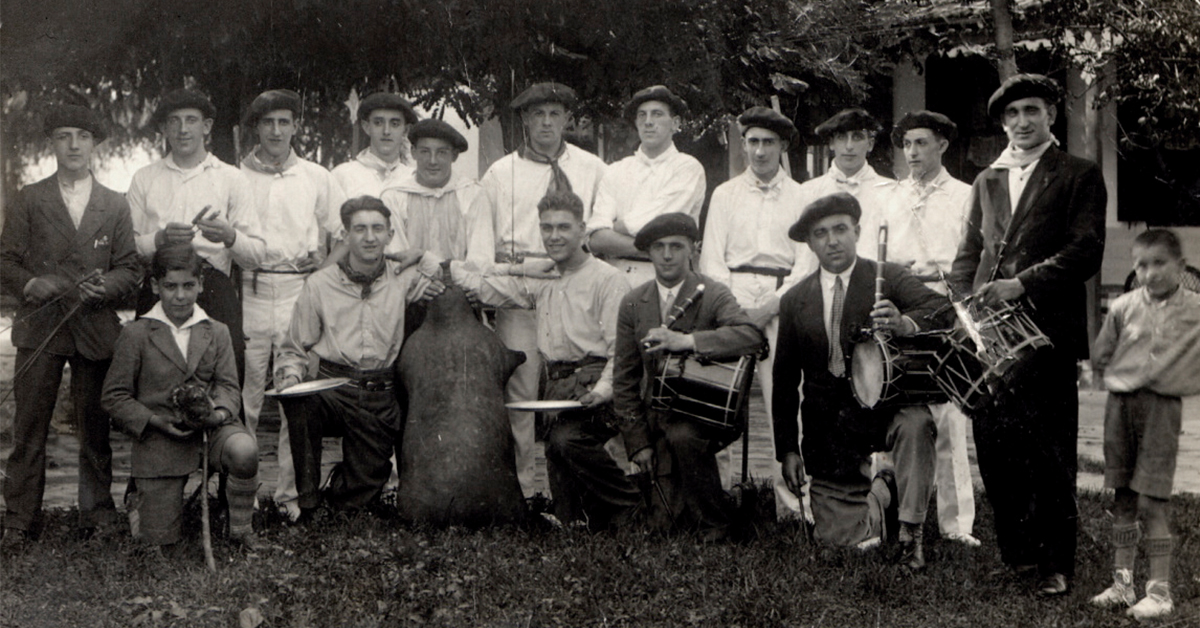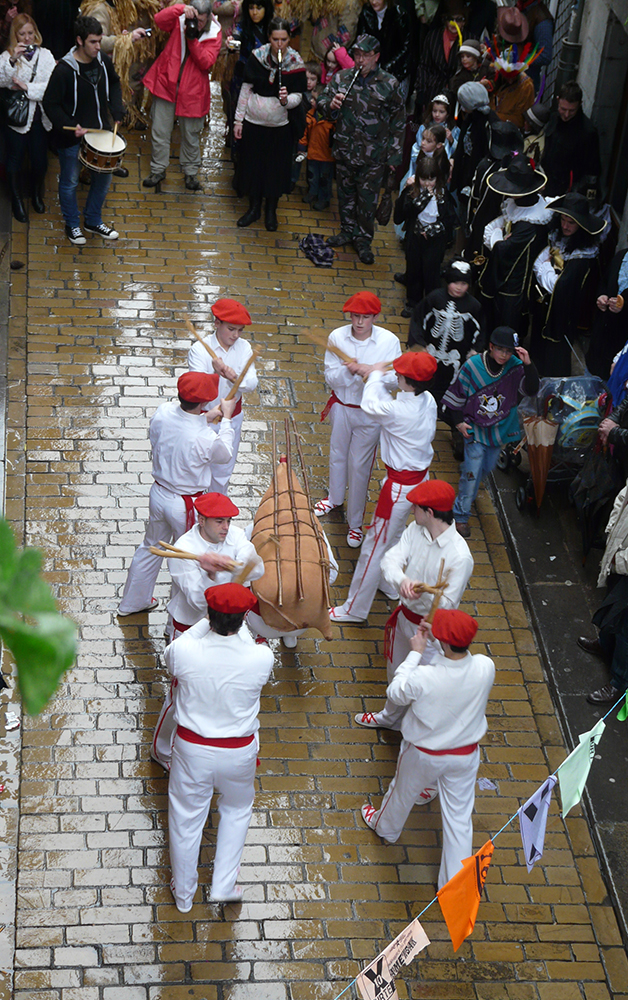Basque ethnography at a glance
Wine and the skins used to transport it are a common feature of the country’s festivities. The wineskin gave its name of dances and routes (edate dantza), and is a feature of sung dances or at the centre of the festive celebrations of young people (zaragi mutilek, mutil ardoak, eskotekoak, etc.) where the wineskins are passed around and are the usual way to invite the revellers to drink wine. Therefore, it is not far-fetched to think of the skin inflated with air and drained of wine as a symbol to tell the community that the festive revelry has come to an end and it is time to return to the daily chore.
Back in his day, Juan Inazio Iztueta (1767-1845) pointed out that “jorrai dantza” was performed as the finale of the festivities and marked the return to the everyday routine. That can be seen in the wineskin dances performed in Deba and Mutriku (jorrai dantza), Ondarrua (saliña-saliña), Zestoa or Bera (zahagi dantza). The wineskin’s connection with the travelling Carnival troupes, as is the case in Markina (zaragi dantza), Doneztebe, Arano and Goizueta (zagi dantza) is not surprising. The troupes consist of two facing parallel rows – sometimes led by a captain or buruzagi or accompanied by other characters (standard-bearer, bear, etc.) –and the people carrying the wineskins are always in the middle. There is sometimes a strict dance etiquette (dance of the captain, dance or promenade of the troupe and the stick dance or with hoes); and at other times, the troupe just moves forward and backward or clicks the tools together, and down on the wineskins.
Wineskin dances are a recurrent feature of the patron saint’s festivities both along the seafaring coastal towns and inland in farming and mountain communities. A greater ritual component can be seen during carnival, where the figures carrying the wineskins can play a similar role as in the previous case, certain freedom in their roaming along, and even, greater independence of movement as they pursue or try to blacken the faces with charcoal of unsuspecting members of the public.
The act of weeding the earth in unison associated with the idea of awakening Nature from its slumber, along with the end of hibernation symbolised by the totemic bear, have resulted in this wide range of choreographies being classified as agricultural dances or to mark the end of festivities, leaving the revelry and entertainment behind to return to the everyday work in the fields.
However, that has not been the only purpose of the convivial dances with wineskins, as they have often been used in many different ways for different community purposes given their informal showiness. During the 19th and 20th centuries, one of them was used to entertain dignitaries, holidaymakers or urban travellers, and the regular clients of the famous spas (Urberuaga, Zestoa, Orduña, etc.). Not to mention their sporadic inclusion, thanks to their simplicity and showiness, in the world of education and training. Such permeability is yet another example of the possible variations or spin-offs of the long-established and unchangeable traditional dances, in their use or modification more in keeping with the contextual reality of a specific historical time.
Josu Larrinaga Zugadi – Sociologist



